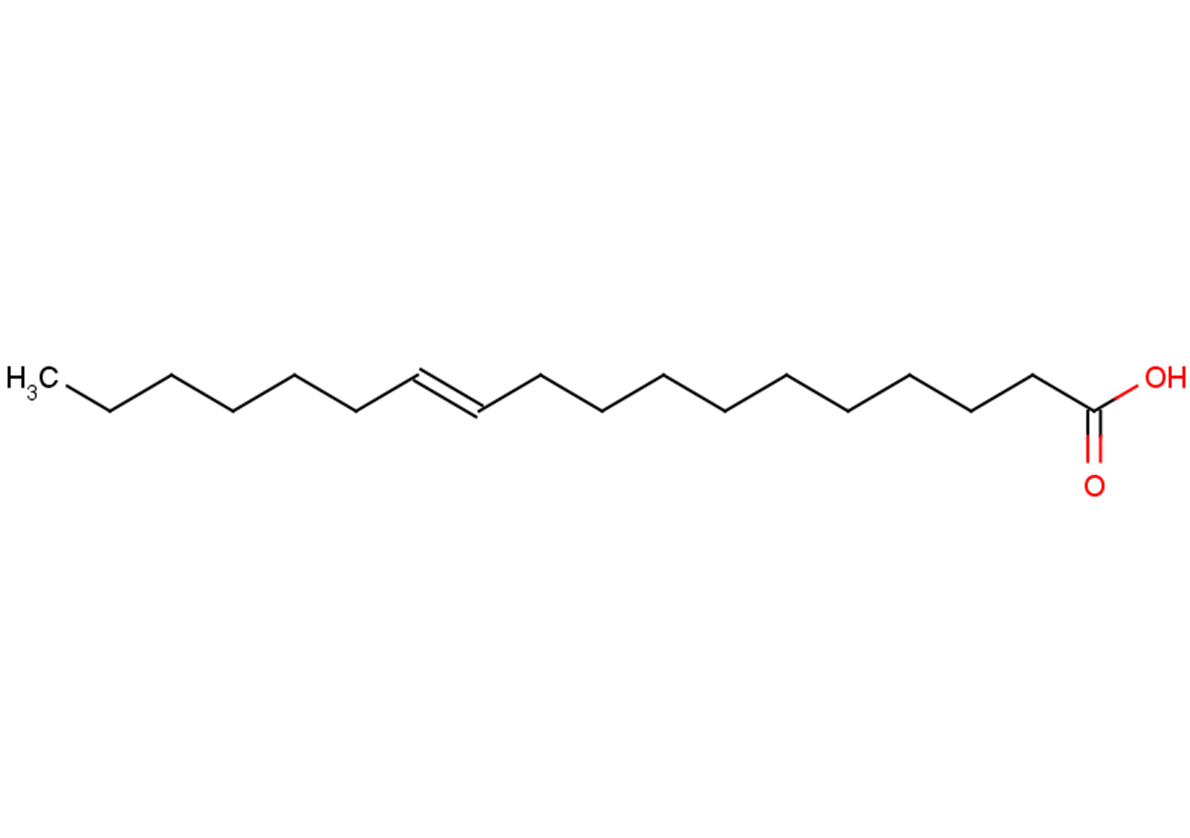
trans-Vaccenic acid
CAS No. 693-72-1
trans-Vaccenic acid( —— )
Catalog No. M24708 CAS No. 693-72-1
trans-Vaccenic acid is a precursor for the synthesis of saturated fatty acid in the rumen and of conjugated linoleic acid at the tissue level.
Purity : >98% (HPLC)
 COA
COA
 Datasheet
Datasheet
 HNMR
HNMR
 HPLC
HPLC
 MSDS
MSDS
 Handing Instructions
Handing Instructions
| Size | Price / USD | Stock | Quantity |
| 25MG | 52 | In Stock |


|
| 50MG | 76 | In Stock |


|
| 100MG | Get Quote | In Stock |


|
| 200MG | Get Quote | In Stock |


|
| 500MG | Get Quote | In Stock |


|
| 1G | Get Quote | In Stock |


|
Biological Information
-
Product Nametrans-Vaccenic acid
-
NoteResearch use only, not for human use.
-
Brief Descriptiontrans-Vaccenic acid is a precursor for the synthesis of saturated fatty acid in the rumen and of conjugated linoleic acid at the tissue level.
-
Descriptiontrans-Vaccenic acid is a precursor for the synthesis of saturated fatty acid in the rumen and of conjugated linoleic acid at the tissue level.
-
In Vitro——
-
In Vivo——
-
Synonyms——
-
PathwayProteasome/Ubiquitin
-
TargetEndogenous Metabolite
-
RecptorHuman Endogenous Metabolite
-
Research Area——
-
Indication——
Chemical Information
-
CAS Number693-72-1
-
Formula Weight282.46
-
Molecular FormulaC18H34O2
-
Purity>98% (HPLC)
-
SolubilityDMSO: 98 mg/mL (346.95 mM; Need ultrasonic)
-
SMILESCCCCCC/C=C/CCCCCCCCCC(O)=O
-
Chemical Name——
Shipping & Storage Information
-
Storage(-20℃)
-
ShippingWith Ice Pack
-
Stability≥ 2 years
Reference
1.Li D, et al. Ruminal microbe of biohydrogenation of trans-vaccenic acid to stearic acid in vitro. BMC Res Notes. 2012 Feb 15;5:97.
molnova catalog



related products
-
D-Glucose 6-phosphat...
D-Glucose 6-phosphate disodium salt is a compound widely present in biological systems. It is a molecule formed when glucose undergoes phosphorylation at the 6th carbon.
-
trans-trans-Muconic ...
trans-trans-Muconic acid is a urinary metabolite of benzene.
-
L-Homoserine
Homoserine is a more reactive variant of the amino acid serine. In this variant the hydroxyl side chain contains an additional CH2 group which brings the hydroxyl group closer to its own carboxyl group allowing it to chemically react to form a five-membered ring.



 Cart
Cart
 sales@molnova.com
sales@molnova.com


